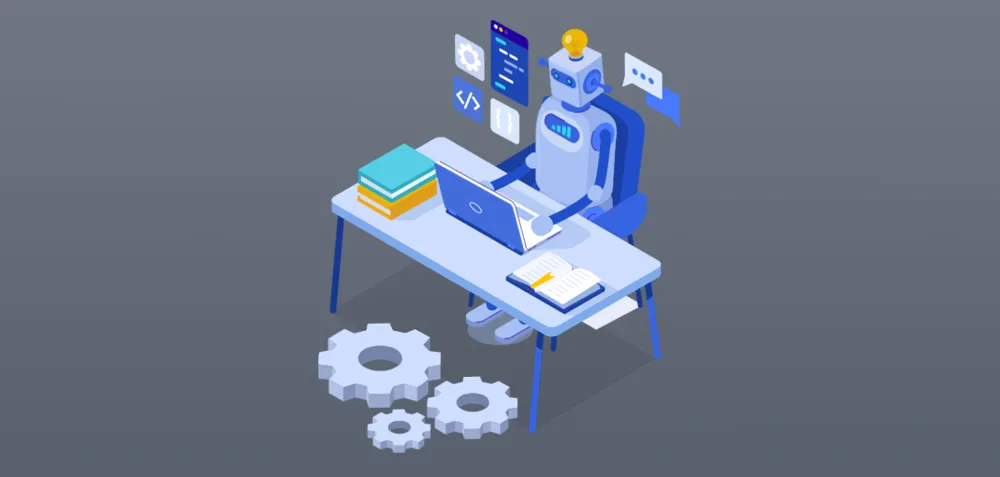6 Real World Use Cases for Robotic Process Automation (RPA) in Accounting
Blog: Cigen

According to a report from the McKinsey Global Institute, the global potential of robotic process automation in accounting is estimated to be around 44%. A significant percentage. Why do you think that is?
If you consider some basic finance and accounting processes, like order to cash, record to report, procure to pay, or controllership processes, you will realise that they involve dull and time consuming tasks, such as day-to-day records keeping, Excel spreadsheet maintenance, and manual data entry.
What is more, these processes are data-sensitive, and even a small clerical error can propagate ‘domino style’, resulting in substantial losses. These processes have the main features that make them amenable to automation: they require that a large amount of data be gathered and processed, they are rule based, with a low exception rate and hence highly predictable, and also mature and stable. And of course, you could never forget how tedious they are, such that merely thinking about them may trigger a pretty bad headache.
All these facts partly explain why half the finance and accounting respondents to a Deloitte survey declared that they consider implementing RPA in their companies.
As many as 70% of UiPath customers begin their automation journey with accounting processes, so it seems that accounting processes pave the way for scaling up to enterprise level.
This makes it quite obvious that there’s a lot to be said about the benefits of RPA in accounting.
Increased productivity, or allowing more time for your valuable employees to focus on more strategic, higher value-added work;
Raising the likelihood of accurate results, with precision in decision or calculation;
Improved compliance because of the fully maintained logs are always available;
24/7 continuous work, 365 days a year;
Cost savings between 20% to 60% of baseline FTE cost;
Improves the company’s overall compliance and reputation.
Quickness - project completion is expected in 9 to 12 months, with an ROI of less than one year.
Real world use cases for RPA in accounting
How can you actually leverage the potential of software robots in accounting, or, in other words, what are the actual use cases for robotic process automation in accounting? The list below comprises processes for which promptness, speed and accuracy are critical; these features provide the rationale for leveraging RPA.
1. Account reconciliation
The comparison of account balances between different systems is an essential task. But alas, it’s monotonous, time consuming, and dull. Also, the different subsystems of your company typically work based on diverse processes, with disparate templates, and with approval flows subject to different requirements.
Let’s not forget the need to coordinate the audit and compliance rules. Passing the job onto software robots streamlines the process and delivers faster results, which are not marred by errors.
2. Invoice processing
The existence of multiple invoice formats, the quality differences between scanned invoices, or the use of several languages (especially in the case of multinational companies) are unavoidable complications when performing manual invoices analysis. Intelligent automation can tremendously ease the process.
Optical character recognition (OCR) is helpful for ensuring the consistency of text formats, while machine learning (ML) can map the invoice fields onto finance applications. Software robots can export the extracted data into a SAP system, to be further used for procurement management. Finally, the bots can perform a three-way matching of invoices.
3. Sales ordering and invoicing
The entry of sales inquiries is a routine, rule based kind of process that seems to have been awaiting to be automated. Bots can update really fast and accurately customers’ details, initiate the delivery process, update inventory records, and prepare sales invoices based on sales orders. In the end, they can complete the task by posting the revenue entry into the system, and… you’re done.
4. Accounts receivable
Linking the right payments to the right accounts and invoices is an extremely error sensitive process. RPA minimises the risk of error when scanning bank statements, identifying specific bits of data, and eventually copying the right data to the appropriate fields in the accounts receivable application.
Supposing that a very small amount of errors is still conceivable, ML is another useful method to keep the overall error rate as low as possible, because it ensures that errors are not reiterated. The result? The cash data is more accurately processed, in a fraction of the time. This is substantiated by the concrete results obtained by the implementation of five UiPath desktop applications for a German-based accounting provider: 0% error rate, 75% manual effort saved, and 65% faster processing.
5. Inventory management
Upon verifying the inventory received, software robots can do three-way matching, which is conducive to highly accurate results. The calculation of price and quantity variances, daunting as it may be for humans to complete, is a piece of cake for bots. And it doesn’t end here. Reports can be generated in multiple formats, and even adjustment entries for the end of year can be seamlessly generated.
6. Closing financial statements
Software robots are experts when it comes to updating comparative figures for financial statements. The evaluation of exchange gains and losses, such a painstaking job when done manually, can be done faster and without careless mistakes through automation.
You can also count on bots’ fairness when setting up value adjustments and entries. Gathering only the relevant information for specific disclosures also fits well with their capacity to “go straight to the point”, avoiding unnecessary complications. Lastly, you can count on an objective analysis of statements and ratio.
Conclusion
The list of use cases for robotic process automation in accounting specifies the needs fulfilled by software robots in the accounting sector. The comparison between the ‘automation needs’ of your company (i.e., the business targets that you can meet more efficiently by leveraging RPA) and what various providers have to offer will help you decide which RPA partner is the most appropriate for you now.
Automation partners are technology consultants with a high level of expertise, who can support and guide RPA implementation in your company, speeding up its digital transformation. In order to choose a partner the smart way, you should know about various candidates’ commercial models (because you are looking for a provider that can commit to your expected cost savings), assess their capacity to innovate and design processes, and check their automation delivery capabilities.
Finally, we invite our Australian readers to download our latest whitepaper, based on what over 2000 leaders (from Optus, Judo Bank, LeasePlan, and more) have told us about their RPA implementation strategies, and their future automation plans.
